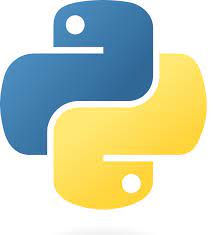PYTHON :Interview Question based on the Topic List
- Ammu Fredy

- Nov 8, 2022
- 3 min read

Image: Photo by Chris Ried on Unsplash
Python has five Datatypes. The list is a built-in datatype used to store the collection of data. The list is the most versatile data type available in Python which can be written as a list of comma-separated values (items) between square brackets. The important thing about a list is that items in a list need not be of the same type.
•Default value is [], list()
Creating a list is as simple as putting different comma-separated values between square brackets.
list1 = ['Physics','Maths',2000,2004]
list2 = [1,2,3,4,5]
list3 = ['hello','world','learn','python']
Similar to string indices, list indices start at 0.
KEY POINTS FOR LIST
A list can be used for storing a group of elements enclosed within [ ]
List will allow Duplicate Elements
List will allow null values
List will maintain the insertion Order
List is mutable
We can retrieve the data from List based on Index
Method
Methods: Description
append() : Add a single element to the end of the list
clear() : Removes all Items from the List
copy() : Returns Shallow Copy of a List
count() : returns occurrences of element in a list
extend() : Add Elements of a List to Another List
index() : returns smallest index of element in list
insert() : Inserts Element to The List
len() : Returns Length of an Object
max() : returns the largest element
min() : returns smallest element
pop() : Removes element at the given index
remove() : Removes item from the list
reverse(): Reverses a List
sort() : sorts elements of a list
sum(): Add items of an Iterable
Now let's look at interview questions based on the topic list
1. Find the duplicate in a list and print that list
a=[1,1,1,2,2]
b=[]
For i in a:
If i not in b:
b.append(i)
print(b)
2. Find the sum of elements of a list
a=[1,2,3,3,3]
sum=0
for i in range(0,len(a)):
sum=sum+a[i]
print(sum)
3. Print the first non-recurring element in a list
a = [1, 1, 1, 2, 2]
k = min(a,key=a.count)
print (k)
4. How to reverse a list
a =[5, 2, 1, 6, 3]
a.sort()
print(a)
5.How to clear the list
a =[5, 2, 1, 6, 3]
a.clear()
print(a)
6.How to remove the last element of that list
a =[5, 2, 1, 6, 3]
a.pop()
print(a)
7. How to reverse a list without using the method and using the method
without method
a =[5, 2, 1, 6, 3]
print(a[::-1])
using method
a =[5, 2, 1, 6, 3]
a.reverse()
print(a)
8. How to insert another list in the middle of this list
a =[5, 2, 1, 6, 3]
b=[3,6]
q=[]
c=[]
d=[]
p=len(a)/2
q=a[0:int(p)+1]
c=a[int(p)+1:]
d=q+b+c
print(d)
9.How to another list using method
a =[5, 2, 1, 6, 3]
b=[3,6]
a.extend(b)
print(a)
10. Remove a element from the list
a =[5, 2, 1, 6, 3]
b=6
a.remove(b)
print(a)
11. check a particular element present in a list
a=[2,3,4,5,6,'a']
p=a.index('a')
print(p)
12. How to print a list of values with sentence
eg : dog is a pet
cat is a pet
mouse is a pet
a=['cat','dog','mouse']
for i in a:
print("%s is my no " %i)
13: How to iterate 2 list and make sentance
eg:The ammu's pet is cat The joann's pet is dog The emma's pet is mouse
a=['cat','dog','mouse']
b=['ammu','joann','emma']
z=zip(a,b)
for a,b, in z:
print("The %s's pet is %s " %(b,a))
14.How to remove duplicate from the list
a=['cat','dog','mouse','cat'
b=list(set(a))
print(b)
15. How to concat two list
a=[1,2,3,4]
b=[6,7,8]
c=a+b
print(c)
16. How to add an element to each element in a list
list = [1,2,3,4,5]
for index in range(len(list)): list[index] = list[index] +1
print(list)
or
list = [1,2,3,4,5]
p= [i+1 for i in list]
print(list)
17.To find the even numbers in a list
list = [1,2,3,4,5]
c=[]
for i in range(len(list)) :
if(list[i]%2==0):
c.append(list[i])
print(c)
18.How to iterate a list with a sublist and get the first element in each sublist
b = [[1,2,3],[4,5,6],[7,8,9],[10,11,12],[13,14,15]]
for i in b:
print(i[0])
For this question,I will add some extra points ,if we want to get access the each element inside the sublist use temporary variables
b = [[1,2,3],[4,5,6],[7,8,9],[10,11,12],[13,14,15]]
for i,j ,k in b:
print(i ,'is' ,j )
output is:
1 is 2 4 is 5 7 is 8 10 is 11 13 is 14
using temporary variables to access the elements
19. Subtract two lists
a=[1,2,3,4]
b=[4,5,6,7]
importNumPyy as np
a1=np.array(a)
b1=np.array(b)
print(b1-a1)
20. Reverse a list without using the function
a=[1,2,3,4]
print(a[::-1])
As I came across the topic List, these are questions I have tried to crack. Hope these questions are useful to you.


Comments